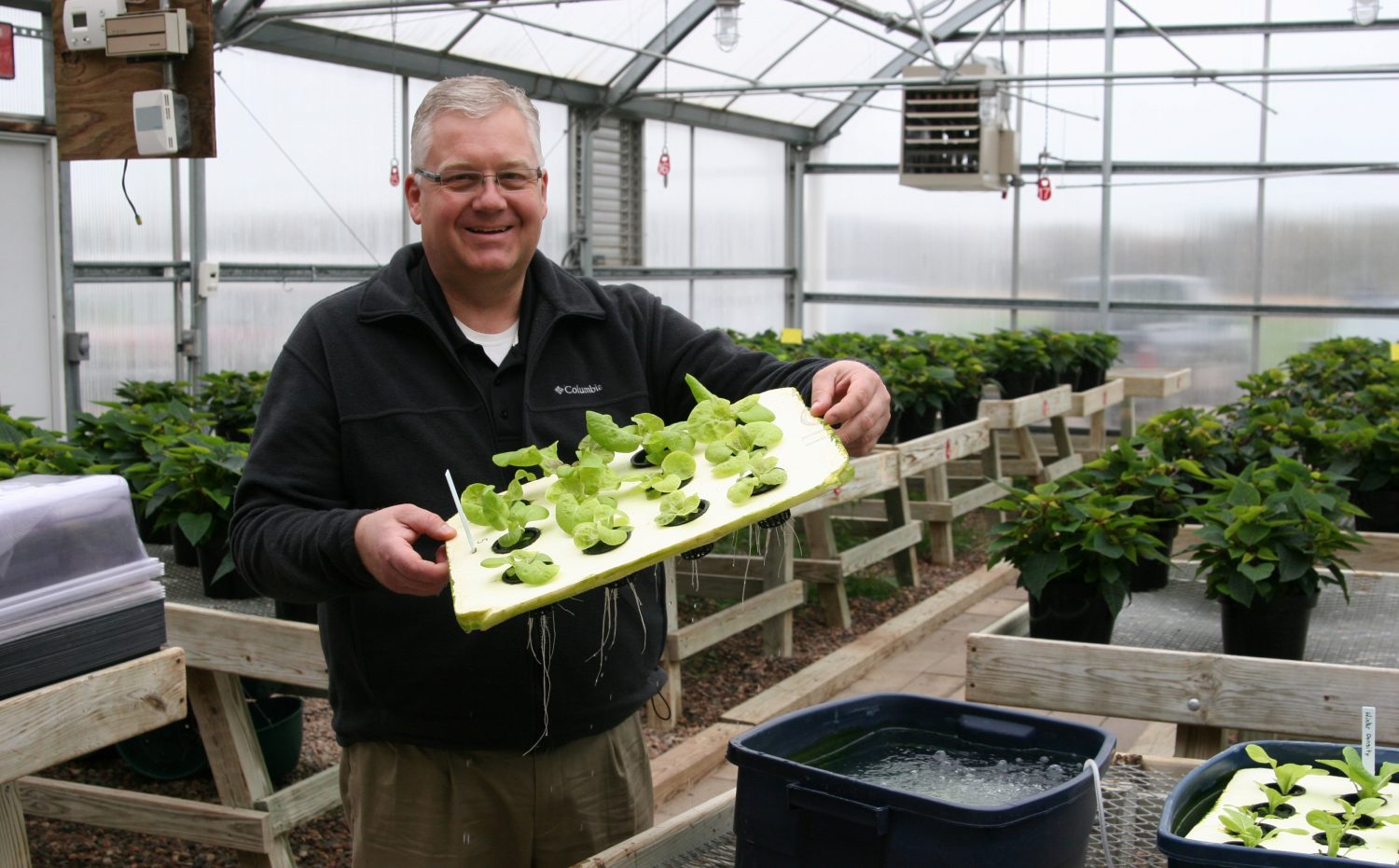A growing opportunity

Spencer schools become role model for self-sustaining food production
By Kris Leonhardt
Editor
SPENCER — The Farm to School Act of 2015 opened the door of opportunity for schools, allowing them to work with local farmers and businesses on homegrown produce and providing students with access to better meal choices and fresh foods.
While the program allows interaction between the agriculture community and schools, offering a variety of training experiences for students, schools may use it as an educational tool that becomes a self-sustaining supplier for the food service program.
“When I came (to Spencer), there was no greenhouse,” said agriculture education instructor Mark Zimmerman. “So the first greenhouse we built is attached here to the school. In that we developed a market for growing ornamentals. We grow poinsettias, Easter lilies, and spring flowers.
“When local foods started coming on the scene, they said, ‘Why don’t you do some of that out here?’”
Already supplying ornamentals to a half dozen local churches, Zimmerman had no desire to exit what was a comfortable business in the community. The only other option was to add a new facility for growing produce.
“In 2012 I started my Spencer Agricultural Education Advisory Council,” said Zimmerman. “I have community leaders, business people, and farmers on the council that act in an advisory role to me.
“In the fall of 2013, I pitched them an idea about really starting to grow food here at school. They all thought it was a great idea. I wrote a grant, and we got the grant.
“We had some generous grantors, … and poof, we were off.”
Zimmerman now conducts two sustainable food classes in fall and spring. The class groups are placed in charge of running the new “high tunnel greenhouse” on the school grounds.
“The kids do the research on what crops we should grow,” explained Zimmerman. “They actually choose the varieties.”

Dawson Wucherpfnnig selects some school-grown carrots from the fruit and vegetable bar at the Spencer school cafeteria.
Through the program students grow cucumbers, carrots, cabbage, lettuce, tomatoes, squash, green beans, and other vegetables that provide produce to the school’s fruit and vegetable bar.
The variety of vegetables and conditions, in conjunction with experimentation in growing technologies, offers students a wealth of experience.
“I think they have experienced everything with this,” said Spencer Food Service Director Frankie Soto.
The experimentation with vegetables also provides an array of products to increase students’ palates.
“That’s our goal: to get them to try things,” said Soto. “We’ve roasted everything. Roasting kale is one of the biggest things with the kids right now.”
The program provides for the cafeteria needs so well that school has little need for an outside produce supplier, and when it does, it purchases from a community farm or market.
“I don’t buy bagged up anything,” added Soto. “The three years we’ve done this, I have not had to do that.”
Spencer’s farm to school initiative has become a working example of a fully functioning, sustaining program.
“I’ve had a lot of schools come visit,” said Zimmerman.
October is National Farm to School month. For more information visit farmtoschool.org.
Leave a reply
You must be logged in to post a comment.






